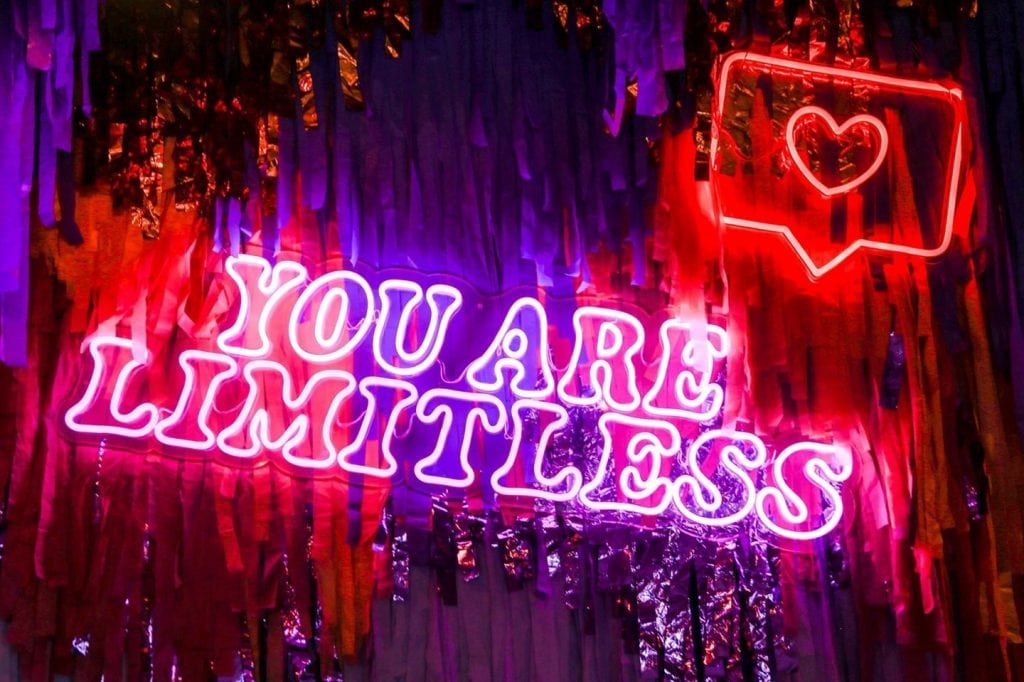Home design using neon lights, which have been around for more than a century, is on the rise. They have been used to make everything from abstract designs to signs with specific words and images, and are best recognised for their vivid colours.
Neon lights are completely safe to use in the home, which is one of its key selling points. Glass tubes filled with a mixture of neon or argon gas and a tiny bit of mercury are used to create neon lights. In order to get the gas to give out light, an electrical current is passed through it.
Neon lights use low voltage electricity, and the glass tubes are sealed, so the gas inside has a hard time escaping. This implies that neon lights are completely safe to install in your home, as there is no chance of gas leaks or explosions.
Some considerations should be made before installing neon lights in your home to guarantee that it is suitable for the intended purpose and won't cause any harm. If you'd like some advice on how to adorn your wonderful home with a new piece, read on!
Considerations Before Installing a Neon Light at Home
There are a few considerations to make when planning to install neon lights in your home to guarantee that they are a good fit for the area and won't pose any safety risks.
As a first step, think about how big and where you want your neon signs to be.
They come in a wide variety of forms and sizes, so pick one that will work in the area you've set aside. You should also give some thought to the location of the neon lights, as they need to be visible from a distance and connected to a power supply.
The neon lights' aesthetic should be your next consideration.
They can be found in a broad variety of styles, from purely abstract patterns to more literal representations of text and images. Pick one that fits in with the style of your house and your own preferences.
The electricity needed to run the neon lights is another factor to think about. A transformer is often needed to reduce the high voltage used by neon lights to a more manageable level. Be sure the neon lights can be powered by the available outlets and wiring.
Finally, think about how often the neon lights need to be serviced.
Neon lights need regular maintenance, including cleaning and possible tube replacement after damage. Select a lamp whose upkeep you can handle without too much hassle.
Neon lights are a fun and creative way to personalise your space, but before you buy them, you should do your research to ensure they are safe and appropriate for your home's environment.
Are Neon Lights Safe to Use in the Bedroom?
\
Assuming they are utilised and installed correctly, neon lights in the bedroom can be safe. Neon lights can be cool, but there are a few things to keep in mind before installing them in your bedroom.
Make sure the neon lights you choose are designed for indoor use first.
There are a lot of neon lights that are only meant for outside use and can't be used indoors. And check that the neon lights you buy have been approved for use by Underwriters Laboratories by looking for the UL listing.
The intensity of the neon signs is the next factor to think about. The intense brightness of some neon signs might make it difficult to fall asleep. Select a neon light that can be dimmed or has a reduced maximum brightness if you intend to use it in a bedroom.
The electricity needed to run the neon lights is another factor to think about. You should check the wiring and outlets to ensure they can handle the power needs of the neon lights and that they are correctly grounded, as with any electrical item.
And lastly, think about where you'll put the neon signs in the bedroom. Put it where it won't interfere with your bedtime or your favourite show.
If you correctly install, utilise, and maintain your Neon lights, they can be used safely in the bedroom.
Where Can Neon Lights Be Used in a Bedroom?
Like in cafes and restaurants, neon lights and signs are increasingly being installed in private residences. Here are some places you may put them to work producing various atmospheres.
Tie Them to the Ceiling of Your Bedroom
In order to decorate the ceiling, neon signs have been installed. It's a common choice that's still generally tolerated. The top of the range neon signs are shaped like moons and stars. Therefore, such patterns can be used to simulate the night sky.
Ceiling-mounted neon signs are an excellent space-saver. That way, you can put other ornaments on the floor and walls. It's also a great option if your walls are already crowded with artwork and other decorations.
Display Them on the Walls of Your Bedroom
There's no better place to try out new looks than on a wall. You have a lot of creative freedom to select designs that you like and that fit well with the overall concept and aesthetic of your bedroom, regardless of how high your walls are.
Set Them Above Your Bed
Commonly used as a form of romantic declaration, neon signs are typically hung over a person's bed. It can take the shape of a touching quote. Also, many people employ forms like hearts. Those in need of a romantic gesture will be just as moved by a bouquet of roses as a pair of lips.
Choose any word you like, from LOVE to SWEETHEART, to use as the font for your signs. Carry this out to make the area feel more welcoming.
Place Them in Frames
The use of framed neon signs to display arbitrary phrases or quotations is encouraged. It gives the room a more unique feel or touch of character. Use signs instead of images for a more unique aesthetic in interior design.
Safety Tips for Bedroom Neon Lights
Neon signs are an inspiring addition to any area, and a bedroom is no exception. However, these require cautious handling.
Though they're not as fragile as glass, here are some precautions to take just in case. Your signage will last longer and be more secure if you take these factors into account.
Keep Your Children Away From Lights and Signs
Children have a natural tendency to want to touch anything they find attractive. Your neon signs won't go unnoticed. As much as you do, they enjoy the benefits of a well-lit environment. Keep lights out of reach of kids who need to be watched closely.
This is a great opportunity to show kids the value of being cautious with their possessions. This also guarantees that they will have the same wonderful time in the room that you have. You should still have an adult wipe the neon signs, even if the kids are learning how to clean surfaces.
Prevent Plug Socket Overloading
Even if there aren't any flashing neon signs, you should already know this. Overloading a socket raises the danger of it overheating. Furthermore, it can cause a fire to break out or a spark to fly.
Neon lights must only be plugged into secure outlets. The use of an extension cord necessitates a thorough examination of all neighbouring electrical devices. Verify that the current draw of the connected devices does not exceed the extension's maximum.
Never Use a Cover on Your Neon Sign.
To begin, you didn't purchase the signs so in order to cover them up, did you? You want them to be obvious to everybody.
Therefore, you should never attempt to do this while the signs are illuminated. You do not want to run the danger of the device overheating. The lights should always be in good working order.
Keep children well away from anything that could catch fire as well. It is essential for both its safety and its overall appearance that it be kept clean at all times.
Get Expert Assistance When Mounting
We are all big fans of do-it-yourself projects. When hanging neon signs, however, you should make sure to acquire assistance from a trained specialist. It will guarantee the efficacy of the process in terms of safety and protection.
In addition to this, you should avoid customising each of your signage independently. This is due to the fact that it has the potential to wreak havoc on the tubes as well as other components, resulting in either damage or an increased risk.
Are Neon Lights a Significant Contributor to Home Energy Consumption?
However, the energy efficiency of neon lights is very context-dependent, varying from one type of neon light to another and from one level of usage to another.
For traditional neon lights, a high voltage transformer is required, which can be a major power drain. LED neon lights, on the other hand, are more energy-efficient and require far less electricity than conventional neon lights. Traditional neon lights can use up to 20 watts per metre, however LED neon lights can use as little as 3 to 5 watts.
Neon lights can also be made more energy efficient by turning them on and off at predetermined times or by installing a dimmer switch or a motion sensor.
Remember that leaving your neon lights on for extended periods of time will cause you to use more electricity. It is advised that the neon lights be turned off when not in use, or that a timer or smart switch be used to automatically turn them off.
It is true that neon lights, depending on the type and use, can be energy efficient. Using LED neon lights in a controlled manner can significantly cut energy usage, which may be of interest to those who are worried about environmental impact.
How to Care for Your Neon Lights at Home
Neon lights need regular maintenance to ensure they last as long as possible and keep working properly. Carefully following these guidelines will ensure that your home's neon lights continue to shine brightly.
- You should clean the neon lights on a regular basis since dust and other debris can develop on the glass tubes and reduce their luminosity. Tubes can be cleaned carefully with a soft cloth or a brush.
- The glass tubes inside neon lights can break or crack over time, so it's important to inspect them often. If you detect any holes or fractures in the tubes, get them changed right away to avoid any more problems.
- Ensure there is a consistent supply of electricity by inspecting the wiring and connections; neon lights specifically. Wiring and connections should be double-checked to ensure they are secure and undamaged.
- Fixing the neon lights requires replacing the transformer, which reduces the voltage from its original source. Transformers can become worn and in need of replacement after some time. Dimming or flickering neon lights could indicate the transformer needs to be changed.
- If you aren't going to be using your neon lights for a while, unplugging them is the best way to keep them from breaking.
- Place neon lights away from radiators and air conditioner vents, as the temperature extremes can cause the glass tubes to expand and fracture.
If you follow these guidelines, your neon lights should keep shining brightly for many more years to come. In addition to keeping them clean and well-maintained, you may extend the life of your neon lights.

Conclusion
One of the biggest draws to neon lights is that they're risk-free to use around the house. Neon lights are made by filling glass tubes with a mixture of neon or argon gas and a small amount of mercury.
Before you go and put neon lights all over your house, there are a few things to think about. While neon lights have their cool moments, there are some things to consider before putting them in your bedroom.
Neon lights can be used safely in the bedroom if they are installed, used, and maintained properly.
Some neon signs may be too bright, making it hard to get to sleep.
A bedroom is no exception to the rule that a neon sign is a great way to add a dose of motivation. If your walls are already stuffed with paintings and other wall decorations, consider installing a neon sign on the ceiling instead.
Signs, not pictures, can add a special touch to a room's decor. Only use wall outlets that have a secure cover to power your neon lights.
An overloaded socket poses a fire hazard because of the increased heat it generates.
But LED neon lights are more eco-friendly and use less power than traditional neon lights. LED neon lights, when used in a measured fashion, can drastically reduce energy consumption, which may be of interest to those who are concerned about the effects of human activity on the environment. Installing a dimmer switch or motion sensor, or setting the lights to turn on and off at specific times, are all ways to reduce neon lighting's energy consumption.
Content Summary
- Neon lights are completely safe to use in the home, which is one of its key selling points.
- This implies that neon lights are completely safe to install in your home, as there is no chance of gas leaks or explosions.
- There are a few considerations to make when planning to install neon lights in your home to guarantee that they are a good fit for the area and won't pose any safety risks.
- As a first step, think about how big and where you want your neon signs to be.
- Pick one that fits in with the style of your house and your own preferences.
- The electricity needed to run the neon lights is another factor to think about.
- Think about how often the neon lights need to be serviced.
- Assuming they are utilised and installed correctly, neon lights in the bedroom can be safe.
- Make sure the neon lights you choose are designed for indoor use first.
- The intensity of the neon signs is the next factor to think about.
- And lastly, think about where you'll put the neon signs in the bedroom.
- If you correctly install, utilise, and maintain your Neon lights, they can be used safely in the bedroom.
- Ceiling-mounted neon signs are an excellent space-saver.
- There's no better place to try out new looks than on a wall.
- Use signs instead of images for a more unique aesthetic in interior design.
- Neon lights are an inspiring addition to any area, and a bedroom is no exception.
- As much as you do, they enjoy the benefits of a well-lit environment.
- You should still have an adult wipe the neon signs, even if the kids are learning how to clean surfaces.
- Neon lights must only be plugged into secure outlets.
- The lights should always be in good working order.
- Neon lights can also be made more energy efficient by turning them on and off at predetermined times or by installing a dimmer switch or a motion sensor.
- Remember that leaving your neon lights on for extended periods of time will cause you to use more electricity.
- It is true that neon lights, depending on the type and use, can be energy efficient.
- Ensure there is a consistent supply of electricity by inspecting the wiring and connections; neon lights specifically.
- In addition to keeping them clean and well-maintained, you may extend the life of your neon lights.
FAQs About Neon Lights and Signs
While the average lifespan of a neon sign is eight to fifteen years, many of them last much longer than that. A sign's lifespan can be shortened by leaving it on for extended periods of time, and it also increases the risk of overheating and electrical surge damage
Neon signs, which were common from the 1920s to the 1960s and again in the 1980s, require them to create the bright, eye-catching displays of colour that are their hallmark.
The neon glass tubes in the metal conduits are linked together by high-voltage electrical wires. When temperatures get too high, the wires powering the sign can melt, rendering it useless in whole or in part.
Believe it or not, no electricity is required here, despite the fact that many people think they must plug it in. When excited by either electricity or ultraviolet light, gas molecules release electrons, causing the gas to glow.
Neon signs are stunning to behold, but they pose a danger if they aren't regularly serviced. Injury from shattered glass, electric shock, or a fire hazard are all examples of the dangers that could arise.

















